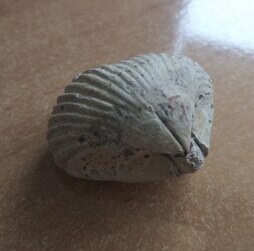
Disclaimers: I have chosen to use Discover with Dex by Macmillan in this exercise here due to a few reasons: I have had a chance to work with it, it is one of the recently published coursebooks and there are some sample pages available online on the CUP website and so I am not at risk of any copyright infrigements here. This is not in any way a criticism of the activities and instructions included in the original material. I just wanted to recreate what I would normally do in this lesson. For that reason, I have decided to do one more thing that I never do and that is plan the entire lesson without consulting the teachers’ book or checking what is there (I really struggle with reading all types of manuals). I left it until after I was done with the whole post. See the last paragraph. It was my conscious decision not to supplement the coursebook activities with any songs, stories or videos or even electronic games such as wordwall, although, of course, I do that in my lessons. I wanted to keep the most basic version of the lesson.
Details: Discover with Dex, Macmillan, level 1, unit 1, page 7.
The original activities can be found in the sample on page 8 as well as in the TB, on the same website, page 11.
Ready? Steady? Go!
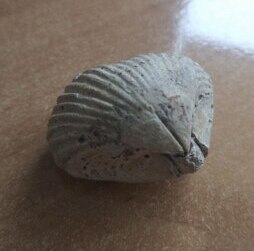
Pre-book
- Introduction and revision of the vocabulary: simple flashcard games, realia (ie putting post-it notes with numbers on the realia, T: calls out the numbers, Kids: name the item), or realia and flashcards (ie matching the relevant flashcard with the item in the classroom by putting the flashcard on the relevant object) Why? Because students need enough exposure to the target language and enough practice, controlled or freer, so that they are ready to complete the task in the coursebook.
- Movement games: using gestures at least for some of the objects (chair – sitting down, table – putting arms on the table, sticker – peeling off and sticking, book – opening the book and reading, pencil – a gesture for writing something carefully, crayon – a gesture for colouring in), puzzle, Puzzle Run – copy the flashcards and cut them up into the jigsaw puzzles (ie two pieces, perhaps three if the kids are older), keep one piece of each in the classroom, leave the rest out and place them around the classroom or the hallway, depending on the location. Pick out one piece, say ‘What is it? It’s a….’ and elicit the rest from the kids (‘a pencil’), ask one of the kids to look around the classroom and look for the missing piece of the puzzle. When they bring it, put the pieces together, elicit the question and the answer, drill. The question and answer can be easily turned into a chant, by adding rhythmical clapping. The roles can be nicely divided, too, with the teacher asking the question and the children replying or the other way round. For instance, if that is the first lesson with this structure, the kids can only repeat the question, it will be the same line over and over again. Why? Becuase the kids have been sitting for quite some time and they will need a stirrer to get rid of the energy that has accumulated so far and to prepare them for a serious settler aka the focused task.
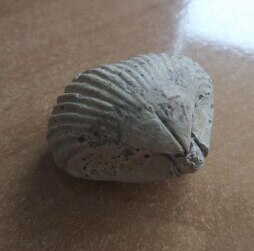
While-book
- Funky envelope: this is one of my favourite tools ever and it seems perfect for this activity. It will keep the kids curious, it will create an opportunity to practise the target language and it will create a link between the flascard games and the activity in the coursebook. The teacher continues using the same structure, What is it? It’s a… Why? Because this kind of an activity will prepare the students for the format of the task they are going to be asked to complete as part of the focused task.
- Open the book (teacher only): the teacher opens the coursebook (or displays it on the screen / the interactive whiteboard) and calls out the names of the objects in the top row, using the key structure again. Why? Because this way the chances are that the students will remain focused on the task and on the instructions. There is only one thing to look at (the book that the teacher is holding or demonstrating), no other books, no other pages in the students’ books etc.
- Model: still with only the teacher’s book open, the teacher completes the first part of the activity. The teacher points at the first circle and asks ‘What is it?’, students answer ‘It’s a chair’. The teacher says: ‘Let’s take a red pencil’ and colours the chair in the circle and draws the line. The teacher repeats the question – answer again, pointing at the pictures ‘What is it?’ ‘It’s a chair’. Why? Because the kids need to see how to complete the task, step by step. Verbal instructions only are not going to be as effective and through looking at the task is completed, the children will understand better what they are to do in the following stage.
- Open the books (students): the kids open their books. The teacher asks again, give out the red pencils / crayons to all the students, monitors. When the kids are ready, the teacher collects all the pencils and they all repeat the exchange again: point to the circle – What’s this? – It’s table – trace the line – point to the picture of the table. Why? This is for everyone the controlled practice task, repeating the teacher’s actions in their own coursebooks.
- What’s this? It’s a crayon: repeat the procedure with the crayon and a new colour. The teacher gives out and collects the pencils or crayons after each round and elicits the question – answer. It might be a good idea to let the kids choose the colour of the pencil / crayon for each round. Why? By adding the element of the different colours and by pencils being given out and collected by the teacher in each round, the teacher ensures that the task is paced properly, that all the students complete the task and that everyone stays on the ball throughout that stage of the lesson.
- Done! the teacher draws a star or a smile to signal that the task has been completed successfully. The kids close their books. Why? Because it helps the kids to understand that the task has been finished.
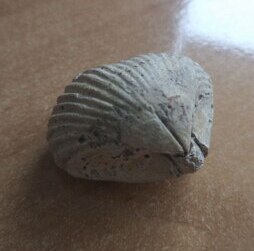
Post-book
- Riddles: it will be a bit of a stretch from the original context but the structure can be used to play riddles, too. The teacher chooses a flashcard, keeps it hidden and asks ‘What is it?’, the kids make their sentences trying to guess the card. It might be necessary for the teacher to model first and provide the first few incorrect guesses to give the children an idea, for example ‘It’s a pencil’ – ‘No’, ‘It’s a sticker’ – ‘No’, ‘It’s a table’ – ‘Yes!’. Naturally, after a few rounds led by the teacher, the kids take turns to lead the game. Why? At this point, with a lot of exposure and practice, the kids should be able to take part in a game when they have to produce the langauge freely.
- Pelmanism: in order to play this game, the teacher needs to prepare a set of flashcards, set A: the regular flashcards, with the objects fully seen and set B: either stencils of the objects or parts of the objects (like in the coursebook), matching or, the simplest set and the easiest to prepare: two sets of the regular flashcards printed in two different colours. Actually, with pre-school or primary students, I always use colour-coded sets as it makes it easier to set the game and to handle the materials. The students play together, led by the teacher. The kids take turns to uncover the cards and to find a match. Every single time they ask the question and answer it (What’s this? It’s a pencil). If they have a pair, they put it away. Why? This is another game that creates an appropriate setting for the use of the key question and answer. If the game is played together, without counting points, it is appropriate also for the youngest students.
- Happy birthday to you: it is a silly game that we sometimes play as part of the new vocabulary practice and here it would be yet another way of providing another opportunity to practice the key structure within the appropriate context. The kids have to sit in a circle and you need to have a set of flashcards. First, to model the activity, the teacher chooses one card, keeps it secret, face down and gives it to the student on the left. This student passes it to their friend and so on until the card makes it back to the teacher. Then, the teacher takes another card and yet another one and the cards start circulating, all of them face down. The teacher start singing ‘Happy Birthday’ and at one point, the teacher stops abruptly. The teacher then asks ‘What’s this?’ and all the kids turn their cards over and tell everyone what they’ve got ‘It’s a sticker’, ‘It’s a pencil’ etc. Then, they play another round. If there are enough flashcards for all the kids, then, naturally, all the students will describe their flashcard. If, however, there are fewer, then the activity is easier to manage and the kids who end up without a flashcard, they can say ‘Oups’ and it is fun, too as the teacher is the one to manage the song and to make sure that different children get a chance to say ‘Oups’ during the game. Why? There are opportunities for the natural use of the key structure as it is a mystery and the game can be stopped at any moment which will be quite a useful feature at the end of the lesson, when the kids are naturally more tired and less likely to remain focused for a longer period of time.
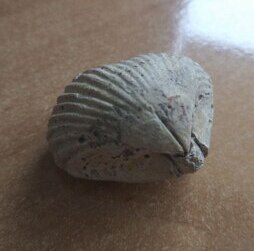
Question to ask yourself while planning:
- What is the aim of the lesson? Even if it is not a formally assessed lesson, it is a good idea to formulate it for yourself, even if only verbally. Why are you and the kids entering the classroom on the day? What would you like them to achieve as regards the language, the social skills, the motor skills or any other area?
- How does the coursebook material help you meet these aims? What would you have to add or to adapt?
- How much language are the students going to produce? Are there any ways of maximising production?
- Will your students (those who are in your group, your student Misha, Peter, Tommy and Andy) be able to complete these tasks? Will they like them? Apart from the fact that you are the teacher (the one asking them to do things) and they are the students (they listen and follow), is there anything in the task and the materials that will get them involved?
- How are you going to prepare the students for the task? What activities will you prepare to introduce and to revise the vocabulary and the structure? Is there anything that you can do to prepare them for the format of the task, too?
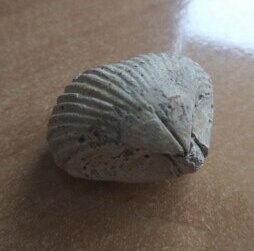
And now I am actually going to read the teacher’s book…
- There is a different TL (Can you see? Yes, I can) which could be used very naturally in the classroom. At the same time, this is not the TL that is introduced and practised in the unit (Have you got? Yes, I have. No, I haven’t). We might argue which structure would be more useful for the students (Can you see? or ‘What is it?’) and both have got their benefits and it is up to the teacher whether to follow the book and what to supplement it with.
- The teacher’s book suggest a slightly different procedure and there is a nice variety of structures introduced and practised (Can you see? What is it? What’s missing? Is it a…? Where is the other chair?). It is great to see a lot of natural language used during the lesson but since all of my students are EFL learners with a limited exposure of one or two real hours per week, I would want to focus the language practise and production and work on one structure at a time. Although, of course, the teacher would be creating a proper language environment, without limiting their own production to this one specific structure only.
- I am afraid I would not use the original task with colouring the magnified objects to match the real objects. The chair and the crayon are easy but the book and the pencil would involve more than one colour and would take a bit longer than I would like to spend on that activity.
- The same goes for the personalisation task. Most of my students are too young to draw such complicated pictures so I would be skipping that one, too. With the older children, I might use it for homework perhaps.
- There is a great set of the digital resources to accompany the coursebook as well as the wall hanging to go with the flashcards and these could be a lovely addition to the lesson.
Happy teaching!
P.S. Don’t forget to check out the wonderful directory of all the useful things in the VYL world created by Sandy Millin. You can find it here.